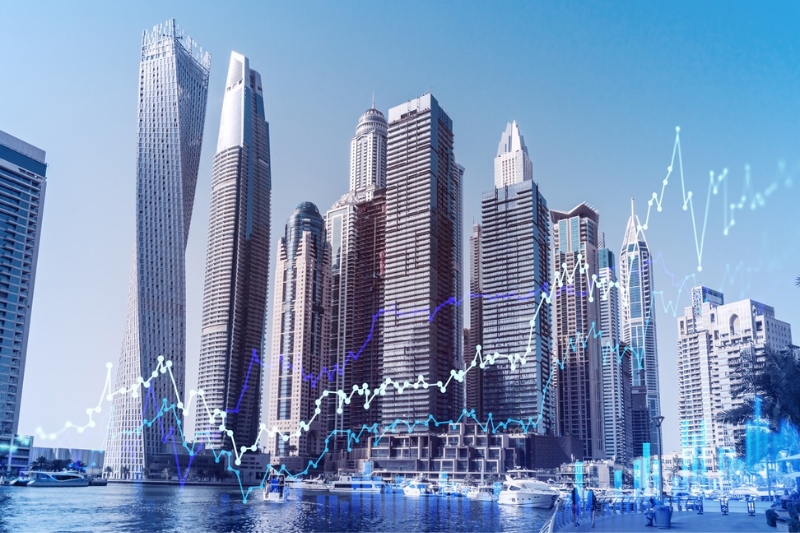In the context of a fall in foreign direct investment worldwide, this remarkable achievement emphasizes the UAE’s ability to position itself as a safe haven for investors. The UAE garnered an astounding $23 billion in foreign direct investment (FDI) last year, dispersed among 1,277 projects, according to a new analysis by data and analytics company GlobalData. Financial, software and IT, and business and professional services were among the areas covered by these programs. This increase in investment activity helped the UAE rise from fourth place in 2022.
For a number of reasons, the UAE has risen in the FDI rankings. Importantly important have been the nation’s policies that are friendly to investors. Reducing visa requirements, encouraging small and medium-sized firms (SMEs), and allowing 100% foreign ownership of corporations have all contributed to the hospitable atmosphere for foreign companies. The UAE’s audacious target of Dh1 trillion ($149.7 billion) in FDI by 2030 highlights this dedication to luring foreign investment even more.
Glenn Barklie, head of FDI services and main economist at GlobalData, highlights the UAE’s status as an investor “safe haven” in a setting of high interest rates and geopolitical unrest. He draws attention to how profitable endeavors have a domino effect that draws in other businesses to take advantage of the UAE’s economic prospects. The regional director of Middle East and Africa at GlobalData Marketing Solutions, Eleanor Slinger, shares this opinion. She cites the UAE’s deliberate emphasis on innovation and its proactive approach to forging government-to-government (G2G) alliances and free trade agreements, which are now producing fruitful outcomes.
Keep Reading
When one looks at the worldwide FDI scene, the UAE’s success story is even more striking. Even when the UAE grew, both capital investment and project counts in worldwide FDI fell. This tendency is explained by the unstable socioeconomic situation and continuing geopolitical tensions. Project numbers fell from 20,675 to 17,714, and global FDI capital investment fell from $1.34 trillion in 2022 to $1.24 trillion in 2023.
This worldwide tendency was bucking in the Middle East, though. FDI in the area increased significantly; project numbers increased by 11.9%, and capital investment increased by 70.8%. Making use of their growing economies and investor-friendly environments, the UAE and Saudi Arabia have emerged as the main forces behind this regional expansion.
In terms of project activity, the UAE topped the Middle East, but Israel topped the area in capital investment flows because of Intel’s enormous $25 billion chip factory investment. With this anomaly removed, Israel’s inbound investment came to about $789 million, making it the fifth-biggest beneficiary of foreign direct investment in the area.
OPEC member and world’s biggest oil producer, Saudi Arabia, is aggressively diversifying its economy to lessen its dependence on hydrocarbon income. Big initiatives in tourism and other industries are drawing in international investment for the kingdom. Saudi Arabia is also competing for advanced technology leadership in the area, hoping to build data centers, support artificial intelligence startups, and expand semiconductor production.
Remaining a major participant in the Middle Eastern foreign direct investment scene, the US has emerged as the top source market for both project numbers and capital investment. US businesses have declared 362 projects in the area valued at $36 billion by 2023. Danmark ($7.6 billion) and Ireland ($9.9 billion) come next.
Future prospects for the UAE are bright because of its dedication to innovation, emphasis on luring in foreign investment, and stable political climate. The UAE’s and Saudi Arabia’s economic potential should keep the region as a whole on an upward trend. As the world economy stabilizes, FDI in the Middle East is probably going to increase much more, confirming its status as a profitable investment location.

